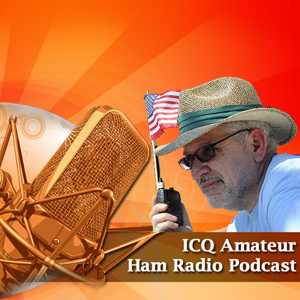
Dan Romanchik - KB6NU
Although I’ve been licensed for a long time, I was not very active until I participated in our club’s 2002 Field Day 2002 operation. There, I made my first CW contact in several years and got hooked on amateur radio all over again.
Since then, I’ve become very active:
I’ve made more than three contacts per day on average since Field Day 2002, mostly on CW.
I blog about amateur radio at KB6NU.com.
I teach ham radio classes.
I love helping people have more fun with ham radio. If you ever hear me on the air, I hope that you’ll give me a call.
Thoughts from our Presenters
In case you haven’t heard by now, SteppIR, the manufacturer of very expensive HF antennas is getting out of the amateur radio business. Their announcement has caused a minor uproar in the amateur radio world, but personally, it’s not a big surprise to me. If MFJ couldn’t seem to find enough customers for their $300 – $500 Hy-Gain antennas, how many $5,000 antennas could SteppIR really sell?
Shame on the ARRL again for once again allowing a division director to resign with only months to go before the next election. It was reported today that Anthony Marcin, W7XM, is resigning as Pacific Division director after serving two and a half years of a three-year term. This very undemocratic manoeuvre is a common one for the ARRL, and this time, no excuse was even given for the director’s resignation.
Last week, I went to lunch with a ham friend of mine. This fellow has been a ham for more than 60 years, and an ARRL member for most of that time. As we were waiting for our food, he says to me, “My ARRL membership is up soon, and I don’t think that I’m going to renew.”
Several years ago, I got a good deal on a Flex 6400 and thought I’d give it a try. It’s a great radio, and I enjoyed using it, but after a couple of years, I decided to give it up and buy an Icom IC-7610 instead. The main reason was the user interface—the IC-7610 has real knobs and buttons instead of just a computer screen to control its functions. Maybe I’m just being old school (I am certainly getting old), but I prefer real knobs and buttons, even if those knobs and buttons are just providing digital inputs to the processor controlling the radio.
Last Saturday, at a ham swap that I attended, Scott, N8SY, our division director, came up to my table and extended his hand. I just couldn’t shake it, though. When I didn’t reciprocate, he asked, “You’re not going to shake my hand?” I said, “No.”
I wrote a couple of months ago about the shameful disqualifications of several candidates for the ARRL Board of Directors. In an attempt to prevent future embarrassment—and prevent any dissenting voices being elected to the board—the ARRL Special Committee on By-Law 46 Revisions, headed by Arthur I. Zygielbaum, K0AIZ, ARRL Midwest Division Director, has come up with revisions to By-Law 18. After reading it, and the commentary, By-Law 18 is a Terrible Idea, written by past New England Division director and chair of the Ethics and Elections Committee, Fred Hopengarten, K1VR, I can only ask again what the heck are they thinking?
I was never very interested in emergency communications. Perhaps it’s because I live in Michigan, which according to World Atlas, is the second safest state as far as natural disasters go.
With what has gone on lately in North Carolina I’m rethinking my position. I still don’t think that every ham has to go whole hog (pun intended) on emergency communications, but we should have the ability to communicate without grid power and some knowledge of emergency communications techniques and protocols.
I’ve always recommended that hams join the ARRL, but recent events have certainly tested my resolve. The ARRL seems to lurch from calamity to calamity. Earlier this year, there was the decision to discontinue sending copies of the print version of QST to members. Then, in May, there was a cyber attack on the ARRL’s shaky IT infrastructure.
My latest One-Day Tech Class took place on Saturday 1 June 2024. There were only 13 in this class, fewer than most classes that I teach. I think the main reason for this is that the university school year had already ended, so there were only a couple of students in this class.






This afternoon, I was talking with a fellow who approached me about providing leadership training for ham radio club officers. Back in 2012, when I was the Michigan Section Affiliated Club Coordinator, I developed just such a course, based on my work as a facilitator for the Rotary Leadership Institute.
The topics I covered included
Leadership Characteristics
The World of Amateur Radio
The Amateur Radio Club and its Activities
Membership: Recruiting and Retention
Leadership: Team Building
Leadership: Setting Goals
Evaluating Your Club
Moving Forward